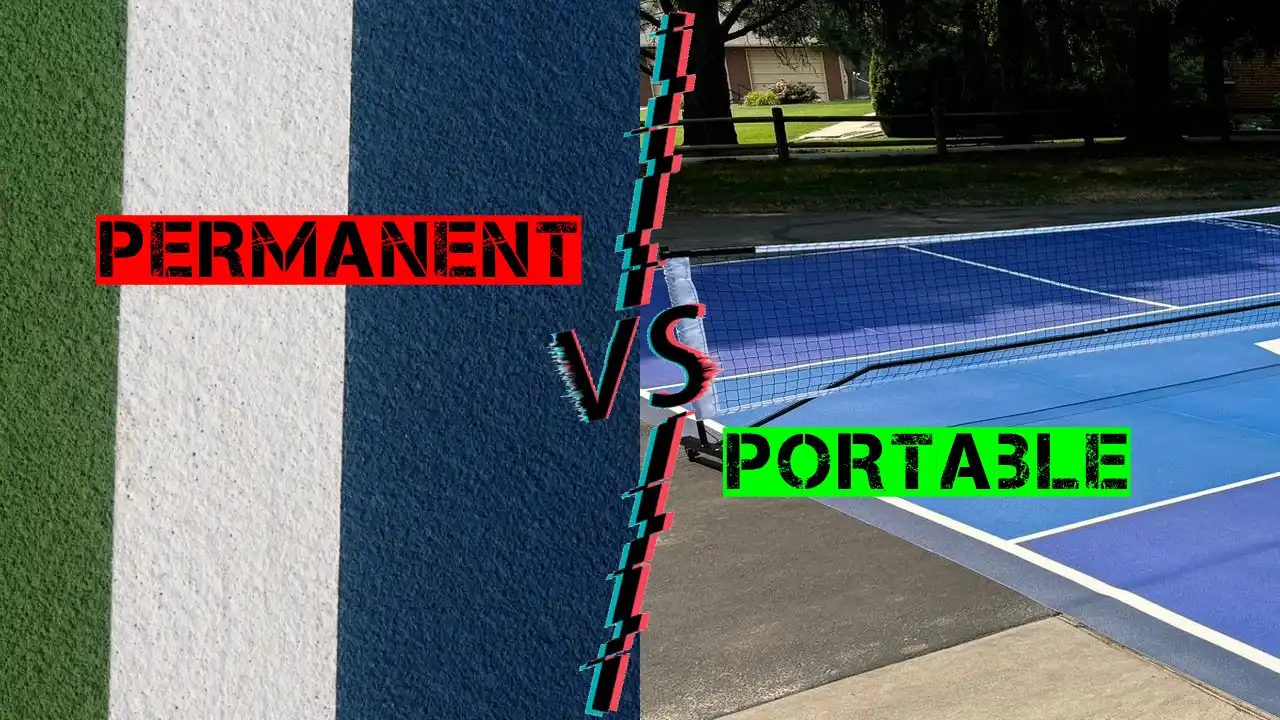Portable vs Permanent Pickleball Courts: Which One to Choose?
When it comes to bringing pickleball to your home, community center, or recreational facility, one of the first and biggest decisions you’ll face is whether to invest in a portable vs permanent pickleball court. Both options have their unique advantages, drawbacks, and technical considerations. In this in-depth guide, we’ll dive deep into the terminology, installation processes, performance characteristics, and cost implications of both permanent and portable pickleball courts. By the end, you’ll be armed with the industry-specific insights you need to make an informed decision.
Understanding the Basics: What Makes a Court Portable vs Permanent?
Permanent pickleball courts are constructed on-site with a fixed substrate—usually concrete or asphalt followed by specialized surfacing materials. They’re engineered for longevity, high-performance play, and minimal maintenance over time. In contrast, portable or temporary pickleball court setups are modular systems that can be installed, dismantled, and relocated without the need for heavy construction.
| Characterstics | Permanent Court | Portable Court |
| Substrate | Concrete or asphalt pour | Modular tiles, roll-out flooring |
| Installation Time | Weeks to Months | Hours |
| Longevity | 15-20 years with time-to-time maintenance | 3-10 years, depending on maintenance |
| Portability | Fixed in place | Fully Portable |
| Surface Performance | Customized Cushion | Less customizable once manufactured, however, customizable options are available before manufacturing. |
Industry Terminology
Substrate: The base layer, typically a concrete slab or asphalt surface, which supports the court system.
Acrylic Coating: A UV-resistant polymer finish applied to permanent courts that provides color, traction, and weather protection.
Modular Interlocking Tiles: Engineered plastic or composite tiles that snap together to form portable court surfaces.
Shockpad: A cushioning layer used under permanent court coatings to reduce joint stress.
Coefficient of Restitution (COR): A measure of ball bounce, critical for consistent play.
Slip Resistance (R-value): A metric indicating surface friction, important for player safety.
Deep Dive: Permanent Court Construction Process
Building a permanent court is a multi-stage project that requires experienced contractors, site evaluation, and precise engineering.
Site Evaluation and Grading
- Soil Analysis: Geotechnical engineers assess bearing capacity and drainage.
- Grading and Compaction: Earthworks to achieve proper slope (typically 1% grade) for surface water runoff.
Substrate Installation
- Concrete vs Asphalt: Concrete: More rigid, longer lifespan, lower maintenance, but higher initial cost. Asphalt: More forgiving for joints, cheaper upfront, but requires periodic resurfacing.
- Typical slab thickness: 4”–6” for residential courts; 6”–8” for commercial-grade installations.
Acrylic Surfacing System
- Primer Coat: Ensures adhesion to the substrate.
- Cushion Layer: Optional shockpad mixed into acrylic for player comfort (often 1⁄8" thick).
- Color Coats and Line Markings: Multiple pigmented layers applied with rollers or spray equipment.
- Seal Coat: UV-protective topcoat to prevent fading and moisture intrusion.
Performance Testing
- COR Testing: Ensuring the ball bounce meets USAPA standards (around 0.6–0.7).
- Slip Testing: Checking R-value to ensure minimum 0.6 static coefficient for safe play.
Portable Court Setup and Materials
Portable pickleball courts leverage innovative materials to mimic the performance of a permanent court without the construction timeline.
Surface Materials
- Polypropylene Tiles: Lightweight, UV-stable, and engineered to facilitate drainage and traction.
- Roll-Out PVC Mats: Carpet-like mats with backing for cushion, best for temporary or multipurpose spaces.
- Composite Interlocking Panels: High-strength panels that offer improved durability and uniform surface characteristics.
Installation Workflow
- Site Preparation: Clear debris and ensure a flat base—can be concrete, asphalt, indoor gym floor, or even compacted gravel.
- Laying Shockpad (Optional): Thin foam underlayment for additional cushioning.
- Snap-Together Tiles: Click into place—installation rate of ~200 sq ft per hour for a two-person crew.
- Boundary and Net Posts: Anchor portable posts with weighted bases or spikes, depending on surface.
Additional Read | How to Set Up a Portable Pickleball Court in 20 Minutes
Performance Characteristics
- Drainage Channels: Engineered tile designs allow water to pass through and evaporate quickly.
- Traction: Textured tile surfaces achieve R-values comparable to acrylic courts.
- DOT Drains: Some systems include integrated drains for high-water applications.
Use Cases: Which Option Fits Your Scenario?
Residential Backyards
- Permanent Courts: Ideal for homeowners committed to pickleball long-term; enhances property value; minimal annual reassembly.
- Portable Courts: Perfect for shared driveways or HOA spaces; can be stored during off-season; lower upfront cost.
Community Centers & Parks
- Permanent Courts: Low maintenance for city budgets; can support leagues and tournaments; year-round availability.
- Portable Courts: Allows multi-sport programming (basketball one week, pickleball the next); portable to multiple parks; prevents overuse of a single site.
Schools and Colleges
- Permanent Courts: Student athletics programs benefit from dedicated courts; aligns with Title IX requirements.
- Portable Courts: Convertible gym floors; pop-up events for intramurals; summer camps; budget-friendly for small districts.
Tournament and Event Operators
- Portable Courts: Must-have for traveling tournaments; quick assembly and teardown; consistent surface across venues.
- Permanent Courts: HQ or anchor facility for recurring events; branding opportunities with custom color schemes.
Maintenance and Care: Ensuring Longevity Regardless of Type
Permanent Courts
- Surface Cleaning: Monthly pressure washing and mild detergent.
- Crack Repair: Seal minor concrete cracks within 6 months to prevent expansion.
- Resealing: Every 3–5 years, depending on UV exposure and play frequency.
Portable Courts
- Tile Cleaning: Power wash or hose down to remove grit and debris.
- Inspection: Quarterly checks for broken or warped tiles; replace as needed.
- Storage: Stack tiles in a dry, temperature-controlled space to prevent warping.
Check out the 10 Best Portable Pickleball Courts for Your Backyard in 2025.
Decision Framework: How to Choose Between Portable vs Permanent Courts
- Budget Constraints: If capital is limited, portable systems offer immediate playability with minimal investment.
- Intended Use: For high-frequency, league-level play, permanent courts excel. For multipurpose or seasonal use, portability wins.
- Site Flexibility: Permanent courts require dedicated real estate; portable courts adapt to any flat area.
- Long-Term Vision: Are you building a pickleball-centric community hub, or do you need adaptable space for various programs? Your vision dictates the best choice.
Conclusion
Deciding between a portable vs permanent pickleball court involves balancing performance, cost, and flexibility. Permanent courts deliver unmatched durability, customized performance characteristics, and property value enhancement. Portable courts offer rapid deployment, multi-use flexibility, and lower capital investment.
By carefully assessing your budget, usage patterns, site characteristics, and long-term goals, you can select the court solution that aligns with your vision—whether that’s a dedicated, championship-grade facility or a versatile, pop-up play space. No matter which path you choose, partnering with an experienced court designer and installer like PortaCourts ensures that your pickleball surface meets the rigorous standards of the sport and provides years of enjoyable play.
Frequently Asked Questions (FAQs)
1. What is the difference between a portable and permanent pickleball court?
A permanent pickleball court is built on a fixed surface like concrete or asphalt and is designed for long-term use with custom surfacing. A portable pickleball court uses modular or roll-out materials and can be set up or dismantled easily, offering flexibility and mobility.
2. Which is better: a portable or permanent pickleball court?
It depends on your needs. Permanent courts offer durability, better surface performance, and enhance property value. Portable courts are ideal for temporary setups, shared spaces, or budget-conscious buyers looking for quick installation and flexibility.
3. How long does a temporary pickleball court setup take?
A temporary pickleball court setup can be completed in just a few hours. Modular tiles or roll-out mats are designed for quick installation—roughly 200 sq ft per hour for a two-person team.
4. Can I set up a temporary pickleball court on any surface?
Yes. Temporary courts can be installed on flat surfaces like concrete, asphalt, gym floors, or even compacted gravel. Proper site preparation ensures safe play and tile longevity.
5. What is the average lifespan of a portable vs permanent pickleball court?
A permanent court lasts 15–20 years with maintenance, while portable courts typically last 3–10 years, depending on usage and storage conditions.
6. Are portable pickleball courts good for tournaments and events?
Absolutely. Portable courts are ideal for tournaments due to their quick setup, consistency across venues, and ability to adapt to various locations—indoor or outdoor.
7. Do portable pickleball courts provide the same performance as permanent ones?
High-quality portable courts with modular tiles or shockpads can offer excellent bounce and traction, though permanent courts have the edge in customized surface cushioning and performance tuning.
8. What are the cost differences between portable and permanent pickleball courts?
Portable courts are more affordable upfront and don’t require heavy construction. Permanent courts involve higher initial investment but offer long-term savings through lower maintenance and greater durability.
COMMENTS
Sort by :





Leave A Comment